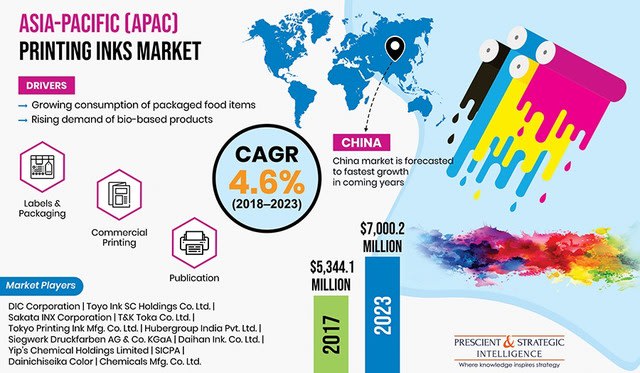The semiconductors and electronics industry plays a significant part in technological advancements, which is why the industry is expanding rapidly. For example, as per Fortune Business Insights, the semiconductor market is projected to reach a value of $730.29 billion by 2026, owing to the rising utilization of consumer electronic devices. The manufacturing of different semiconductors and electronic devices needs suitable materials so as not to pose any problems when they are being used. Electroceramics materials are equipped with various properties that make them suitable for usage in the semiconductor and electronics industry. Moreover, with the expansion of this industry, the demand for electroceramics is rising as well.
Get a sample copy of the market insights: https://www.psmarketresearch.com/market-analysis/electroceramics-market/report-sample

Ceramic materials that have the ability to perform an electronic function for a specific application area referred to as electroceramics. These materials are utilized in the manufacturing of semiconductors and electronics devices, such as sensors, actuators, capacitors, power distributions devices, and data storage devices, owing to their technological feasibility, ability to maintain economic viability and optimize size and space constraints in the final products. According to a P&S Intelligence, in 2017, the global electroceramics market reached a value of $8,590.9 million and is expected to generate a revenue of $12,084.4 million in 2023, advancing at a CAGR of 5.9% during the forecast period (2018–2023).
There are several types of electroceramics, some major types are magnetic ceramics, dielectric ceramics, piezoelectric ceramics, and conductive ceramics. Dielectric ceramics are utilized the most for the manufacturing of capacitors and insulators that are major components in industrial and consumer devices. All these electroceramics are manufactured using different materials including alumina, titanate, and zirconate. As alumina-based electroceramics are harder, have better thermal conductivity, substantial wear and tear resistance, and high electrical insulation at high temperature ranges than other electroceramics, the demand for these ceramics is expected to be the highest in the coming years.
The demand for these different types of electroceramics is further projected to grow during the forecast period because of the global transition toward high-volume and high-speed data transfer. In the past few years, the requirement for electronic devices and components has risen because of growing data creation and application, enhancing network infrastructure, and digitalization across various countries. As an integral part of telecommunication devices, electroceramics have the ability to handle this growing demand for catering to the need for high-speed and high-volume requirements without compromising the technological feasibility of a telecommunication network.
The requirement for electroceramics is expected to rise significantly in the coming years in the Asia-Pacific region, primarily because of the growing adoption of these materials in automotive and electronics manufacturing industries. The need for consumer electronic products in developing countries including Taiwan, China, South Korea, India, and Japan is increasing rapidly because of rising disposable income of people. In addition to this, there are large production bases for the manufacturing of communication and information technology goods in the region, which meet the requirement for electronic products across the globe. These factors are leading to the growth of the electroceramics market in the region. In conclusion, electroceramics are being adopted in different industries for different applications because of their ideal properties.
Get a sample copy of the market insights: https://www.psmarketresearch.com/market-analysis/electroceramics-market/report-sample

Ceramic materials that have the ability to perform an electronic function for a specific application area referred to as electroceramics. These materials are utilized in the manufacturing of semiconductors and electronics devices, such as sensors, actuators, capacitors, power distributions devices, and data storage devices, owing to their technological feasibility, ability to maintain economic viability and optimize size and space constraints in the final products. According to a P&S Intelligence, in 2017, the global electroceramics market reached a value of $8,590.9 million and is expected to generate a revenue of $12,084.4 million in 2023, advancing at a CAGR of 5.9% during the forecast period (2018–2023).
There are several types of electroceramics, some major types are magnetic ceramics, dielectric ceramics, piezoelectric ceramics, and conductive ceramics. Dielectric ceramics are utilized the most for the manufacturing of capacitors and insulators that are major components in industrial and consumer devices. All these electroceramics are manufactured using different materials including alumina, titanate, and zirconate. As alumina-based electroceramics are harder, have better thermal conductivity, substantial wear and tear resistance, and high electrical insulation at high temperature ranges than other electroceramics, the demand for these ceramics is expected to be the highest in the coming years.
The demand for these different types of electroceramics is further projected to grow during the forecast period because of the global transition toward high-volume and high-speed data transfer. In the past few years, the requirement for electronic devices and components has risen because of growing data creation and application, enhancing network infrastructure, and digitalization across various countries. As an integral part of telecommunication devices, electroceramics have the ability to handle this growing demand for catering to the need for high-speed and high-volume requirements without compromising the technological feasibility of a telecommunication network.
The requirement for electroceramics is expected to rise significantly in the coming years in the Asia-Pacific region, primarily because of the growing adoption of these materials in automotive and electronics manufacturing industries. The need for consumer electronic products in developing countries including Taiwan, China, South Korea, India, and Japan is increasing rapidly because of rising disposable income of people. In addition to this, there are large production bases for the manufacturing of communication and information technology goods in the region, which meet the requirement for electronic products across the globe. These factors are leading to the growth of the electroceramics market in the region. In conclusion, electroceramics are being adopted in different industries for different applications because of their ideal properties.











